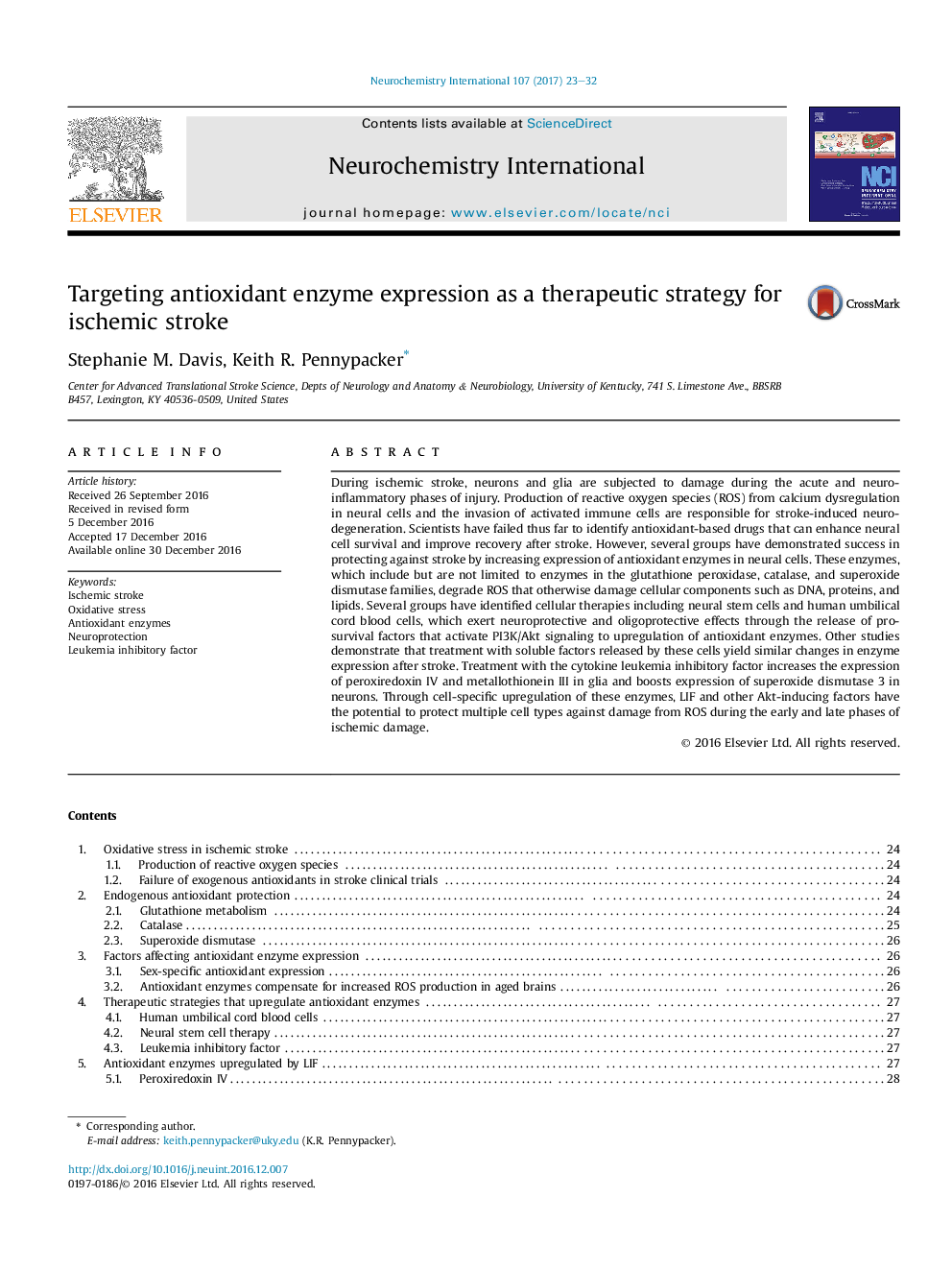| کد مقاله | کد نشریه | سال انتشار | مقاله انگلیسی | نسخه تمام متن |
|---|---|---|---|---|
| 5534584 | 1551268 | 2017 | 10 صفحه PDF | دانلود رایگان |
- Overview of antioxidants as treatment for stroke.
- Explanation of failed attempts to develop exogenous antioxidant treatment.
- Overview of endogenous antioxidant systems.
- Use of agents that activate these endogenous antioxidant systems to develop stroke therapeutic.
During ischemic stroke, neurons and glia are subjected to damage during the acute and neuroinflammatory phases of injury. Production of reactive oxygen species (ROS) from calcium dysregulation in neural cells and the invasion of activated immune cells are responsible for stroke-induced neurodegeneration. Scientists have failed thus far to identify antioxidant-based drugs that can enhance neural cell survival and improve recovery after stroke. However, several groups have demonstrated success in protecting against stroke by increasing expression of antioxidant enzymes in neural cells. These enzymes, which include but are not limited to enzymes in the glutathione peroxidase, catalase, and superoxide dismutase families, degrade ROS that otherwise damage cellular components such as DNA, proteins, and lipids. Several groups have identified cellular therapies including neural stem cells and human umbilical cord blood cells, which exert neuroprotective and oligoprotective effects through the release of pro-survival factors that activate PI3K/Akt signaling to upregulation of antioxidant enzymes. Other studies demonstrate that treatment with soluble factors released by these cells yield similar changes in enzyme expression after stroke. Treatment with the cytokine leukemia inhibitory factor increases the expression of peroxiredoxin IV and metallothionein III in glia and boosts expression of superoxide dismutase 3 in neurons. Through cell-specific upregulation of these enzymes, LIF and other Akt-inducing factors have the potential to protect multiple cell types against damage from ROS during the early and late phases of ischemic damage.
Journal: Neurochemistry International - Volume 107, July 2017, Pages 23-32
